
Group-administered surveys are a great way to collect information from participants about the outcomes of an event or program. These kinds of surveys are best used for documenting short-term outcomes and can make use of an audience response system. This four-page fact sheet details how to develop a group-administered questionnaire, how to use an audience response system, and how to prepare and implement the survey. Written by Glenn D. Israel and Jessica L. Gouldthorpe, and published by the Agricultural Education and Communication Department.
http://edis.ifas.ufl.edu/pd082
Tag: Jessica L. Gouldthorpe
The Savvy Survey #10: In-Person-Administered Surveys

In-person-administered surveys are a type of face-to-face interview that collects mainly quantitative data from a number of individuals and can be useful for collecting information from low-literacy audiences or obtaining very detailed information from agricultural producers or business owners about needs or program outcomes. A part of the Savvy Survey Series, this seven-page fact sheet presents the construction, development, and implementation of in-person surveys as well as how to prepare an introductory script, train interviewers, and manage the survey process. Written by Glenn D. Israel and Jessica L. Gouldthorpe, and published by the Agricultural Education and Communication Department.
http://edis.ifas.ufl.edu/pd074
The Savvy Survey #7: Formatting Questionnaires
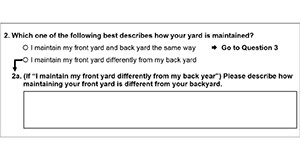
The Savvy Survey #7: Formatting Questionnaires is the seventh of seventeen Savvy Survey Series publications from state specialists with expertise in tailored design survey methodology. Developing a high-quality questionnaire is critical for collecting useful data. After selecting the best questions, the next step is to format them to produce the most effective questionnaire possible. This 7-page publication spotlights several considerations, including question order, layout for best visual appearance, and pagination. Written by Jessica L. Gouldthorpe and Glenn D. Israel, and published by the Agricultural Education and Communication Department.
https://edis.ifas.ufl.edu/pd071
The Savvy Survey #12: Telephone Surveys
 This publication provides a brief overview of how to develop and conduct a telephone survey to collect data. It assumed that a list of phone numbers, such as program registration lists, is available for conducting program evaluations or assessing needs. When volunteers or staff assist with the survey by interviewing respondents, this data collection method can be economical and effective. Careful attention is needed when developing the questionnaire and supporting materials and when orienting interviewers in order to obtain credible survey data. In the right situation, telephone surveys can be a valuable tool for Extension agents and specialists. This 7-page fact sheet was written by Glenn D. Israel and Jessica L. Gouldthorpe, and published by the UF Department of Agricultural Education and Communication, October 2014.
This publication provides a brief overview of how to develop and conduct a telephone survey to collect data. It assumed that a list of phone numbers, such as program registration lists, is available for conducting program evaluations or assessing needs. When volunteers or staff assist with the survey by interviewing respondents, this data collection method can be economical and effective. Careful attention is needed when developing the questionnaire and supporting materials and when orienting interviewers in order to obtain credible survey data. In the right situation, telephone surveys can be a valuable tool for Extension agents and specialists. This 7-page fact sheet was written by Glenn D. Israel and Jessica L. Gouldthorpe, and published by the UF Department of Agricultural Education and Communication, October 2014.
http://edis.ifas.ufl.edu/pd076
The Savvy Survey #17: Reporting Survey Findings
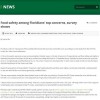 Wrapping up the Savvy Survey Series, this fact sheet is the last of three publications that outline procedures to follow after implementing a survey. With the surveys in, data collected, and analyses conducted, the next logical step deals with communicating the results. Through communication, ideas and thoughts are shared with others in a manner that will be easily understood. In Extension, some common communication channels include the annual Report of Accomplishment (ROA), grant project reports, abstracts, and oral presentations. This 5-page fact sheet was written by Milton G. Newberry, III, Jessica L. Gouldthorpe, and Glenn D. Israel, and published by the UF Department of Agricultural Education and Communication, September 2014.
Wrapping up the Savvy Survey Series, this fact sheet is the last of three publications that outline procedures to follow after implementing a survey. With the surveys in, data collected, and analyses conducted, the next logical step deals with communicating the results. Through communication, ideas and thoughts are shared with others in a manner that will be easily understood. In Extension, some common communication channels include the annual Report of Accomplishment (ROA), grant project reports, abstracts, and oral presentations. This 5-page fact sheet was written by Milton G. Newberry, III, Jessica L. Gouldthorpe, and Glenn D. Israel, and published by the UF Department of Agricultural Education and Communication, September 2014.
http://edis.ifas.ufl.edu/pd081
The Savvy Survey #16: Data Analysis and Survey Results
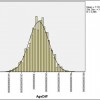 Continuing the Savvy Survey Series, this fact sheet is one of three focused on working with your survey data. In its most raw form, the data collected from surveys do not tell much of a story except who completed the survey, partially completed it, or did not respond at all. To truly interpret the data, it must be analyzed. Where does one begin the data analysis process? What computer program(s) can be used to analyze data? How should the data be analyzed? This publication serves to answer these questions. This 7-page fact sheet was written by Milton G. Newberry, III, Jessica L. Gouldthorpe, and Glenn D. Israel, and published by the UF Department of Agricultural Education and Communication, August 2014.
Continuing the Savvy Survey Series, this fact sheet is one of three focused on working with your survey data. In its most raw form, the data collected from surveys do not tell much of a story except who completed the survey, partially completed it, or did not respond at all. To truly interpret the data, it must be analyzed. Where does one begin the data analysis process? What computer program(s) can be used to analyze data? How should the data be analyzed? This publication serves to answer these questions. This 7-page fact sheet was written by Milton G. Newberry, III, Jessica L. Gouldthorpe, and Glenn D. Israel, and published by the UF Department of Agricultural Education and Communication, August 2014.
http://edis.ifas.ufl.edu/pd080
The Savvy Survey #15: Survey Responses and Data Entry
 This publication discusses the procedures for entering paper-based survey responses into an electronic database and preparing (or “cleaning”) all data, regardless of mode, for analysis. It also addresses data entry considerations for closed-ended questions (with response choices), partially-closed questions, and open-ended questions, since the types of questions used in the survey will also impact the data entry process.This 5-page fact sheet was written by Milton G. Newberry, III, Jessica L. Gouldthorpe, and Glenn D. Israel, and published by the UF Department of Agricultural Education and Communication, August 2014.
This publication discusses the procedures for entering paper-based survey responses into an electronic database and preparing (or “cleaning”) all data, regardless of mode, for analysis. It also addresses data entry considerations for closed-ended questions (with response choices), partially-closed questions, and open-ended questions, since the types of questions used in the survey will also impact the data entry process.This 5-page fact sheet was written by Milton G. Newberry, III, Jessica L. Gouldthorpe, and Glenn D. Israel, and published by the UF Department of Agricultural Education and Communication, August 2014.
http://edis.ifas.ufl.edu/pd079
The Savvy Survey Series
 This month in this seventeen publication series based on Tailored Design Survey Methodology, we offer:
This month in this seventeen publication series based on Tailored Design Survey Methodology, we offer:
- #6a: General Guidelines for Writing Questionnaire Items
- #6b: Constructing Open-Ended Items for a Questionnaire
- #6c: Constructing Closed-Ended Items for a Questionnaire
- #14: Mixed Mode Surveys
These fact sheets are Glenn D. Israel and Jessica L. Gouldthorpe, and published by the UF Department of Agricultural Education and Communication, April 2014.
http://edis.ifas.ufl.edu/topic_series_savvy_survey
The Savvy Survey #11: Mail-Based Surveys
 As part of the Savvy Survey Series, this publication provides Extension faculty with an overview of the process that uses mail for sending and receiving questionnaires. Mail surveys can be an effective way to collect data for needs assessments in program planning or for follow-up surveys evaluating outcomes of Extension programs. Survey research consistently shows that mail surveys usually obtain as high or higher response rates than other methods. This fact sheet provides guidance for constructing the questionnaire, addressing visual design and formatting considerations, and implementing the survey. Extension faculty who incorporate best practices of questionnaire design and mail survey procedures will be able to achieve a high response rate and collect more useful data than those who don’t use these best practices. This 9-page fact sheet was written by Glenn D. Israel and Jessica L. Gouldthorpe, and published by the UF Department of Agricultural Education and Communication, October 2013.
As part of the Savvy Survey Series, this publication provides Extension faculty with an overview of the process that uses mail for sending and receiving questionnaires. Mail surveys can be an effective way to collect data for needs assessments in program planning or for follow-up surveys evaluating outcomes of Extension programs. Survey research consistently shows that mail surveys usually obtain as high or higher response rates than other methods. This fact sheet provides guidance for constructing the questionnaire, addressing visual design and formatting considerations, and implementing the survey. Extension faculty who incorporate best practices of questionnaire design and mail survey procedures will be able to achieve a high response rate and collect more useful data than those who don’t use these best practices. This 9-page fact sheet was written by Glenn D. Israel and Jessica L. Gouldthorpe, and published by the UF Department of Agricultural Education and Communication, October 2013.
http://edis.ifas.ufl.edu/pd071
The Savvy Survey #3: Successful Sampling
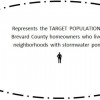 As part of the Savvy Survey series, this publication provides Extension faculty with an overview of topics to consider when thinking about who should be surveyed. Topics in this publication include understanding the survey population, constructing the sampling frame, recognizing who exists outside the population of interest, and defining the sample. This 5-page fact sheet also provides insight on issues such as over-coverage and error that can arise because of poor sampling procedures. Written by Glenn D. Israel and Jessica L. Gouldthorpe, and published by the UF Department of Agricultural Education and Communication, October 2013.
As part of the Savvy Survey series, this publication provides Extension faculty with an overview of topics to consider when thinking about who should be surveyed. Topics in this publication include understanding the survey population, constructing the sampling frame, recognizing who exists outside the population of interest, and defining the sample. This 5-page fact sheet also provides insight on issues such as over-coverage and error that can arise because of poor sampling procedures. Written by Glenn D. Israel and Jessica L. Gouldthorpe, and published by the UF Department of Agricultural Education and Communication, October 2013.
http://edis.ifas.ufl.edu/pd063
The Savvy Survey #4: Details in the Design
 As part of the Savvy Survey Series, this publication provides an overview of important facets of the survey process. Topics covered include modes for collecting responses, strategies for contacting clients and personalizing contacts, and tips for using incentives. The ability of a survey to gather accurate and useful information for assessing program needs or evaluating program outcomes is greatly influenced by the survey’s design. Careful attention to detail is essential. This 4-page fact sheet was written by Glenn D. Israel and Jessica L. Gouldthorpe, and published by the UF Department of Agricultural Education and Communication, October 2013.
As part of the Savvy Survey Series, this publication provides an overview of important facets of the survey process. Topics covered include modes for collecting responses, strategies for contacting clients and personalizing contacts, and tips for using incentives. The ability of a survey to gather accurate and useful information for assessing program needs or evaluating program outcomes is greatly influenced by the survey’s design. Careful attention to detail is essential. This 4-page fact sheet was written by Glenn D. Israel and Jessica L. Gouldthorpe, and published by the UF Department of Agricultural Education and Communication, October 2013.
http://edis.ifas.ufl.edu/pd064
The Savvy Survey #2: Using Surveys in Everyday Extension Programming
 This second publication in the Savvy Survey Series provides Extension faculty with additional information about using surveys in their everyday Extension programming. The publication suggests how surveys can be used in needs and assets assessments to inform program development, as formative and summative evaluations to support program improvement, and as customer service tools to capture satisfaction within programming efforts. This publication also introduces the concept of using logic models to guide questionnaire development, while also discussing general data types (demographics, factual information, attitudes and opinions, behaviors and events). This 5-page fact sheet was written by Glenn D. Israel and Jessica L. Gouldthorpe, and published by the UF Department of Agricultural Education and Communication, October 2013.
This second publication in the Savvy Survey Series provides Extension faculty with additional information about using surveys in their everyday Extension programming. The publication suggests how surveys can be used in needs and assets assessments to inform program development, as formative and summative evaluations to support program improvement, and as customer service tools to capture satisfaction within programming efforts. This publication also introduces the concept of using logic models to guide questionnaire development, while also discussing general data types (demographics, factual information, attitudes and opinions, behaviors and events). This 5-page fact sheet was written by Glenn D. Israel and Jessica L. Gouldthorpe, and published by the UF Department of Agricultural Education and Communication, October 2013.
http://edis.ifas.ufl.edu/pd062
The Savvy Survey #5: The Process for Developing Survey Questions
 A useful process for developing a high-quality questionnaire follows four steps. Brainstorm questions on a topic. Review the literature for concepts, questions, and indices. Collect ideas for questions and wording choices through focus groups or key informant interviews. And select questions linked to a program’s logic model. Each of these steps is discussed in this 3-page fact sheet written by Glenn D. Israel and Jessica L. Gouldthorpe, and published by the UF Department of Agricultural Education and Communication, August 2013.
A useful process for developing a high-quality questionnaire follows four steps. Brainstorm questions on a topic. Review the literature for concepts, questions, and indices. Collect ideas for questions and wording choices through focus groups or key informant interviews. And select questions linked to a program’s logic model. Each of these steps is discussed in this 3-page fact sheet written by Glenn D. Israel and Jessica L. Gouldthorpe, and published by the UF Department of Agricultural Education and Communication, August 2013.
http://edis.ifas.ufl.edu/pd065
The Savvy Survey #13: Online Surveys
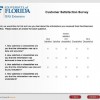 As part of the Savvy Survey Series, this publication provides Extension faculty with an overview of the process that uses email to invite participants to complete an on-line survey. This 10-page fact sheet provides guidance for constructing an online questionnaire, addressing visual design and formatting considerations, and implementing an online survey. Written by Glenn D. Israel and Jessica L. Gouldthorpe, and published by the UF Department of Agricultural Education and Communication, August 2013.
As part of the Savvy Survey Series, this publication provides Extension faculty with an overview of the process that uses email to invite participants to complete an on-line survey. This 10-page fact sheet provides guidance for constructing an online questionnaire, addressing visual design and formatting considerations, and implementing an online survey. Written by Glenn D. Israel and Jessica L. Gouldthorpe, and published by the UF Department of Agricultural Education and Communication, August 2013.
http://edis.ifas.ufl.edu/pd077
The Savvy Survey #1: Introduction
 This initial publication in the Savvy Survey Series provides Extension faculty who are interested in creating savvy surveys with a brief introduction to survey design and basic considerations to make when choosing to use a survey for program planning and evaluation. The publication also provides an introduction to and overview of the Savvy Survey Series in Appendix A. This 5-page fact sheet was written by Jessica L. Gouldthorpe and Glenn D. Israel, and published by the UF Department of Agricultural Education and Communication, August 2013.
This initial publication in the Savvy Survey Series provides Extension faculty who are interested in creating savvy surveys with a brief introduction to survey design and basic considerations to make when choosing to use a survey for program planning and evaluation. The publication also provides an introduction to and overview of the Savvy Survey Series in Appendix A. This 5-page fact sheet was written by Jessica L. Gouldthorpe and Glenn D. Israel, and published by the UF Department of Agricultural Education and Communication, August 2013.
http://edis.ifas.ufl.edu/pd061
Reusable Learning Objects: Tools for Teaching in Nonformal Education (WC140)
 Reusable learning objects are short, self-contained, digital learning activities that can be valuable tools for sharing information. This 4-page fact sheet provides a brief synopsis of what reusable learning objects are and how to create an them for use in an educational setting. Written by Jessica L. Gouldthorpe, Amy Harder, T. Grady Roberts, and Nicole Stedman, and published by the UF Department of Agricultural Education and Communication, April 2013.
Reusable learning objects are short, self-contained, digital learning activities that can be valuable tools for sharing information. This 4-page fact sheet provides a brief synopsis of what reusable learning objects are and how to create an them for use in an educational setting. Written by Jessica L. Gouldthorpe, Amy Harder, T. Grady Roberts, and Nicole Stedman, and published by the UF Department of Agricultural Education and Communication, April 2013.
http://edis.ifas.ufl.edu/wc140
Capturing Change: Comparing Pretest-Posttest and Retrospective Evaluation Methods (WC135)
 Two models that are commonly used in Extension programming to capture change over a short period of time are the pretest-posttest model and the retrospective pretest (or post-then-pre) model. When deciding which model to use, Extension professionals should keep in mind that each participant has a knowledge base that includes both factual information and perceptions pertaining to factual information. As you read about the strengths and weaknesses of these two design models, consider how each model fits the evaluation situation to select the one that can best measure change in your program. This 4-page fact sheet was written by Agricultural Education and Communication, and published by the UF Department of Jessica L. Gouldthorpe and Glenn D. Israel, January 2013.
Two models that are commonly used in Extension programming to capture change over a short period of time are the pretest-posttest model and the retrospective pretest (or post-then-pre) model. When deciding which model to use, Extension professionals should keep in mind that each participant has a knowledge base that includes both factual information and perceptions pertaining to factual information. As you read about the strengths and weaknesses of these two design models, consider how each model fits the evaluation situation to select the one that can best measure change in your program. This 4-page fact sheet was written by Agricultural Education and Communication, and published by the UF Department of Jessica L. Gouldthorpe and Glenn D. Israel, January 2013.
http://edis.ifas.ufl.edu/wc135